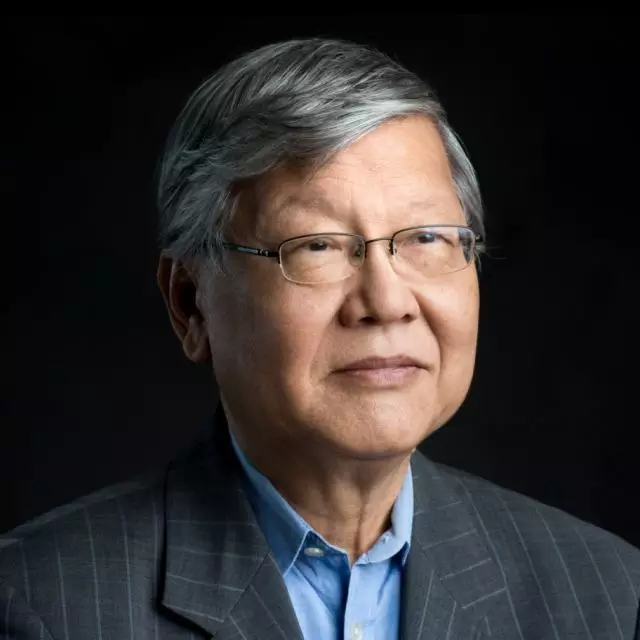
Asia Global Institute's Distinguished Fellow Andrew Sheng and Professor Xiao Geng discuss the challenges faced by China's policymakers.
HONG KONG – Last month, the Nobel laureate economist Douglass North, who applied economic theory to history to gain insight into institutional and social change, died at his home in Michigan. But his ideas will live on, particularly in China. Though North never focused explicitly on China's institutional development, his theoretical framework could prove invaluable to the country's leaders as they navigate the next phase of institutional change.
In his Nobel lecture in 1993, North identified three lessons that policymakers should draw from his research. First, what determines economic performance is the mix of "formal rules, informal norms, and enforcement characteristics." Second, polities have a major impact on economic performance, because they "define and enforce the economic rules." And, finally, adaptive efficiency (how the rules are changed), not allocative efficiency (the most effective rules right now), is the key to long-term growth.
These lessons are reflected in North's assessment of Western Europe's institutional and economic development, in which he attributed the Industrial Revolution to two key factors: varying belief systems and intense competition between and within the emerging sovereign powers. Specifically, the English and the Dutch created diverse political/economic units that evolved institutions nurturing specialization and division of labor. These institutions delivered superior economic and political outcomes through lower transaction costs, clear and enforceable property rights, and other shared rules and norms.
North observed that institutional change is extremely difficult, as it requires overcoming not only vested interests, but also outdated belief systems and mental models. The breakthrough, he noted, comes when institutions go beyond trade within local communities to permit anonymous and impersonal exchange across time and space. Sustainable institutions are those that learn and adapt, overcoming their own biases and limitations.
North’s work goes a long way toward explaining the dramatic institutional and economic changes that have occurred in China over the last three decades, as well as illuminating the challenges that it will face over the next decade. In fact, it should temper the pessimism that pervades most current discussion of China’s prospects.
For starters, intense competition is alive and well in China. Its major cities (including Shanghai, Guangdong, Tianjin, and Xiamen) are still competing vigorously with one another, and a new breed of technologically innovative companies (such as Huawei, Tencent, and Alibaba) are battling to open up new markets in goods, services, talent, capital, and knowledge.
The ruling Chinese Communist Party (CCP) has dedicated itself to creating a more efficient, services-driven economy, subject to the market and the rule of law. For example, it has committed to ease market access by loosening entry requirements for both domestic and foreign investors. It has also strengthened property rights relating to land, labor, capital, and knowledge; this, together with advances in digital and robot technology, has brought down Chinese transaction costs.
Moreover, having built the needed physical infrastructure in the last decade (perhaps to excess), China is now emphasizing the software infrastructure needed to sustain the growth of its burgeoning services sector. In 2014, services’ share of GDP already exceeded 50%, more than the manufacturing and primary sectors combined.
While the government has not pursued adequate reform of state-owned enterprises, it has deliberately allowed new, largely private-owned technology giants to compete against state-owned banks and financial institutions. And no one predicted the intensity of the CCP’s campaign to root out corruption, including in the military, the financial sector, and the highest levels of the party itself.
China’s market-oriented shift will be reinforced by the commitments that its leaders made to the International Monetary Fund when the renminbi was added to the basket of currencies that determine the value of the Fund’s unit of account, Special Drawing Rights. The need to cope with trade pressures after the Trans-Pacific Partnership encompasses most of China’s neighbors will have a similar disciplining effect.
The CCP is judging itself not against the Western benchmark of liberal democratic governance, but against the ancient Chinese legalist tradition of strong, central authority that maintains legitimacy by upholding meritocratic standards of accountability. Perhaps more important, it has relied on seasoned intellectuals and policymakers – not Party ideologues – to design its development roadmap.
This approach was fortified last summer, when despite serious market turmoil, the CCP upheld its commitment to allow the market to play a “decisive role in resource allocation.” There could be no clearer indication that China is willing to upgrade its belief systems and mental models in order to achieve high-income status.
Nonetheless, China still has rivers to cross, particularly when it comes to adaptive efficiency. Here, it is important to note that whereas formal rules can be altered quickly, informal cultural norms are difficult to change in the short run. New formal rules can conflict with established norms, causing bureaucratic incentives to become distorted, with adverse effects on institutional behavior and performance.
China’s leaders must cope with an asymmetry between what they can deliver and what consumers demand. According to North, institutional under-capacity is a short-term allocative problem, or sunk cost, for which the state can compensate with greater adaptive efficiency, or better mechanisms for bringing about the exit of less efficient institutions.
North’s theoretical legacy could prove vital for China’s policymakers in the coming years, because it gives them specific guidance about how to cross the river of rapid institutional change. The alternative is to continue relying on what Deng Xiaoping, the father of China’s institutional breakthrough more than three decades ago, called “feeling the stones.” That, as North would put it, may not be the most efficient way to get to the other side.
This article first appeared on Project Syndicate on December 17, 2015.
The views expressed in this article are the author's own and do not necessarily reflect Asia Global Institute's editorial policy.

Distinguished Fellow, Asia Global Institute

President, Hong Kong Institution for International Finance
Room 326-348, Main Building
The University of Hong Kong
Pokfulam, Hong Kong